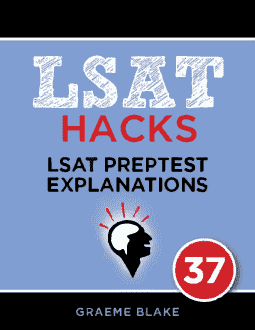QUESTION TEXT: The solidity of bridge piers built on pilings depends…
QUESTION TYPE: Must be True
FACTS:
- The depth of pilings determines how solid a bridge is.
- Pilings used to be driven in to the point of “refusal”, where they wouldn’t go any deeper.
- The Rialto Bridge met the standard for refusal. 24 hammer blows would drive the pilings in by less than 2 inches.
ANALYSIS: We don’t know anything about how safe or unsafe the standard of refusal was.
We can conclude that the pilings could have gone deeper. The 24 hammer blows were still driving in the pilings, just not by much.
___________
- Presumably the standard of the time was fairly safe. We have no evidence it wasn’t, and the Rialto Bridge met the standard.
- This is exactly the same as A. We have no evidence the standard was unsafe. People probably would have stopped using the standard if it was unsafe.
- If Da Ponte met the contemporary standard then that means he met the standard of his time.
- Huh? The stimulus clearly state that all bridges built before 1700 had pilings driven to refusal. Presumably some bridges were built during 1588-1700.
- CORRECT. 24 hammer blows drove the pilings in by less than two inches. That isn’t much, but they were still being driven in.
The standard of refusal determined that they were “deep enough”, but the pilings could have gone deeper.

Free Logical Reasoning lesson
Get a free sample of the Logical Reasoning Mastery Seminar. Learn tips for solving LR questions


PT38-2, Q2
But, how do we know that if the pilings were struck beyond 24 times that they would have further penetrated the ground?
The stimulus says that after 24 hammer blows, the pilings would not penetrate deeper than 2 inches. So, we don’t even need to know what happens beyond 24 hammer blows. We just know that once the standard of refusal had been met, if the pilings were to receive 24 hammer blows, the pilings might penetrate up to 2 inches deeper into the ground.
So, it is indeed possible that after the standard of refusal had been met, the pilings could potentially penetrate up to 2 inches deeper. That’s why (E) is correct.
Thank you for you explanation Lucas. I see
Answer choice (E) essentially says that the pilings COULD POSSIBLY be driven down further. In talking with friends there seems to be a difference between COULD and Probably Might/COULD. Has the LSAT had questions turn on whether an event COULD or POSSIBLY COULD occur. But more importantly, is there a fundamental difference between COULD and POSSIBLY COULD.
Yes, “could” on the LSAT just means that there’s some non-zero possibility that an event might occur. Whether the chance of it occurring is certain/very likely/very unlikely/somewhat likely etc., “could” covers every likelihood of that event occurring except “definitely could not occur”.
“Probably”, on the other hand, means that the likelihood of that event occurring is >50%.
But the passage says that it was already driven in that much, nor that it could be driven in that much.
If something is driven into the ground by a certain amount, then obviously it *can* be driven in by that amount. The second part follows from the first.
Note: This is an old comment but I wanted to clarify the point.